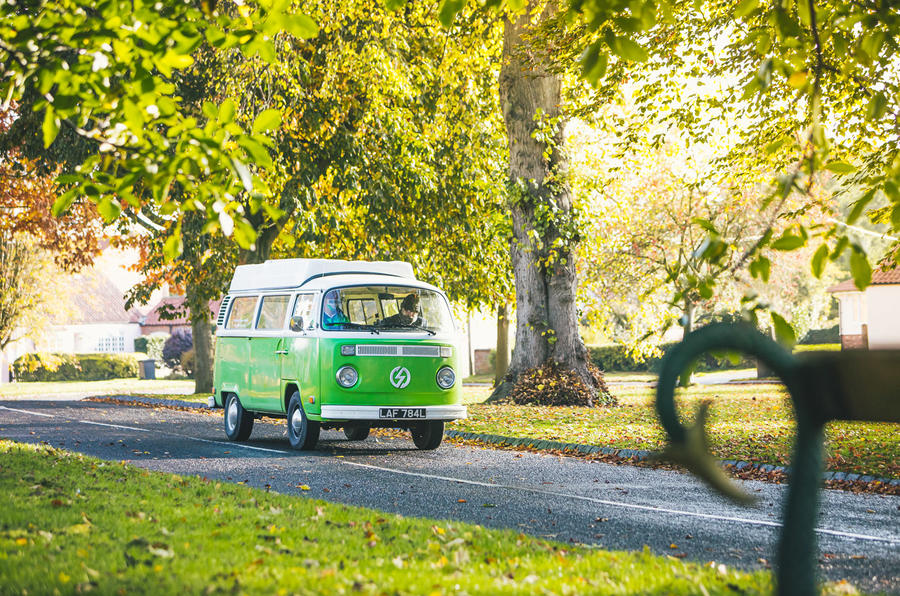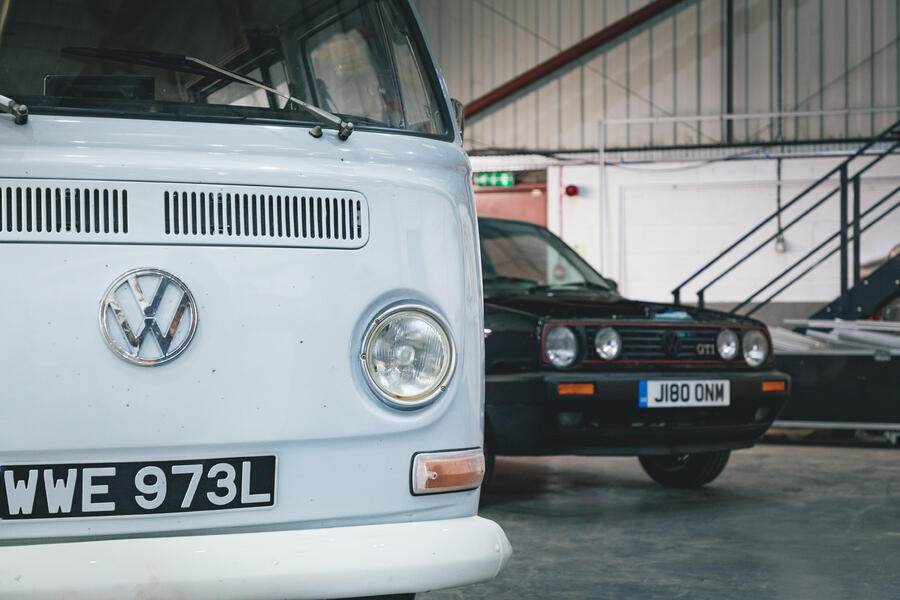I might have imagined it, but I’m sure that Kit Lacey has been eyeing up the Baby Shark. Not because he wants to buy it or covets the sheer wonderfulness of my E21 BMW. Nope, it’s because it has a state-of-the-art (in 1979) three-speed automatic gearbox, which will mate up to an electric motor and inverter and could easily house a battery pack under the cloth rear seats.
Lacey’s company, eDub Services, converts conventionally combustionengined cars into electric ones. Indeed, I’ve already spotted an immaculate Volkswagen Golf GTI Mk2. My heart misses a beat, not least because this king of hot hatches is also missing something fundamental: its 1.8-litre engine.
It’s all going to be fine, though, as Lacey shows me the 3D details of the unique Golf subframe on his phone. “Fabrication is the most difficult part,” he tells me. “But it’s absolutely crucial in getting the installation to work. Until we can engineer the position of the motor using the existing hard points of the bodywork, it isn’t going to work. Once the motor is in, we then install the driveshafts, batteries and all the other ancillaries.”

If rewiring an iconic Golf GTI for a battery pack makes you queasy, then hold tight, because eDub’s big project, due in a matter of months, is an electric Porsche 911. “It’s being engineered as a stand-alone kit,” says Lacey. “Customers can bring their cars to us for conversion or buy our own range of pre-built models.”
So how did it get to this point? Well, Lacey can blame his mum. Not only was she an early adopter of a Nissan Leaf in 2011 but also a senior university lecturer specialising in battery degradation. Although Lacey modestly claims he has no actual qualification or background for this sort of business, there’s no denying that he has a plan – and he employs all the right engineers to make his ideas happen.



















Join the debate
Add your comment
This is so wrong on all levels.
Even leaving money aside, surely the environmental cost of dragging the raw materials out of the ground and then manufacturing the parts for the conversion, is going to be far worse for the environment, than the few thousand miles worth of CO2 they might emit whilst driving their petrol powered classic each year?
That's awfully preumptuous and judgemental.
As for the environmental cost, from the article it's clear that he's reusing Leaf and Tesla electronics, so all the things you mention are irrelevant to these conversions - if anything he's making good use of already-made components.
I hope their business model doesn't depend on them charging £47k in the medium term and that they're just creaming early adopters. Otherwise they're going to disappear pretty quickly. It will only be a very few years before it's possible to convert a car professionally for £10k. Then it all makes a lot more sense.